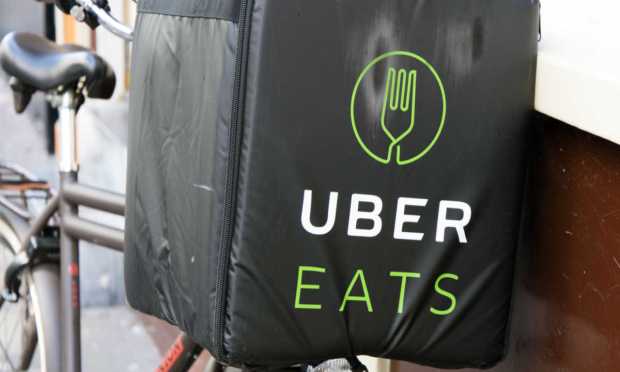
Uber Eats is partnering with The Save Mart Companies as restaurant aggregators step up their grocery selections to remain competitive while Instacart prepares to go public.
Uber’s delivery arm is partnering with the Modesto, California-based grocer, adding more than 190 Save Mart, Lucky and FoodMaxx stores to its marketplace, according to a Tuesday (Sept. 12) press release.
“[F]rom one California-based company to another, we’re proud to partner with such a beloved regional favorite,” Christian Freese, head of the aggregator’s grocery and new verticals business in the U.S. and Canada, said in the release. “We look forward to a strong partnership in service of our shared communities in California and beyond.”
The news comes as leading grocery aggregator Instacart gears up for its upcoming initial public offering (IPO), with the company noting in an August filing with the Securities and Exchange Commission (SEC) that eGrocery’s growth has been exponential in recent years. Specifically, the company observed that, in the decade between 2009 and 2019, online grocery penetration increased from 1% of the overall grocery market to 3%, and then, in the following three years to 2022, it quadrupled to 12%.
PYMNTS Intelligence from the study “Tracking the Digital Payments Takeover: Catching the Coming eCommerce Wave,” created in collaboration with Amazon Web Services, showed that 12% of grocery transactions occur online — 6% via mobile device, 6% via computer.
Yet these digital consumers are a high-value group. The same study revealed that the amount of money spent on the average online grocery purchase is 32% higher for digital grocery transactions than for in-store purchases: $116 versus $88, respectively.
With online grocery continuing to grow, restaurant aggregators are breaking a sweat. After all, if consumers begin relying on Instacart for their day-to-day grocery purchases, the company may have a better shot at becoming their go-to for all on-demand purchases, including convenience, pharmacy and general retail, which are categories that restaurant aggregators are looking to gain share in as well.
“Instacart could become an everyday shopping platform,” PYMNTS Karen Webster observed in an August feature, adding that consumers want the convenience of buying their goods from a single platform
“According to PYMNTS data, 44% of consumers want the ease and convenience of such an experience on a single platform when it comes to purchasing [food, prescriptions, health and beauty items and other] products,” Webster wrote.
In the same SEC filing, Instacart highlighted DoorDash and Uber Eats as its competitors in several categories, including overall third-party fulfillment, on-demand grocery delivery and advertising for consumer packaged goods (CPG) brands.
DoorDash, for its part, publicly cast doubt on the grocery aggregator last week, with CEO Tony Xu said to have observed at a conference that consumers feel that grocery delivery is “worse than the physical experience of buying your own” and adding that “there is still a long ways to go.”
For now, top restaurant aggregators have the edge over the grocery technology company. According to PYMNTS Provider Ranking of Aggregators, which ranks leading players based on a range of factors including channel coverage, users and downloads, DoorDash remains in the lead, with Uber Eats ranked in second place and Instacart nabbing the bronze at No. 3.